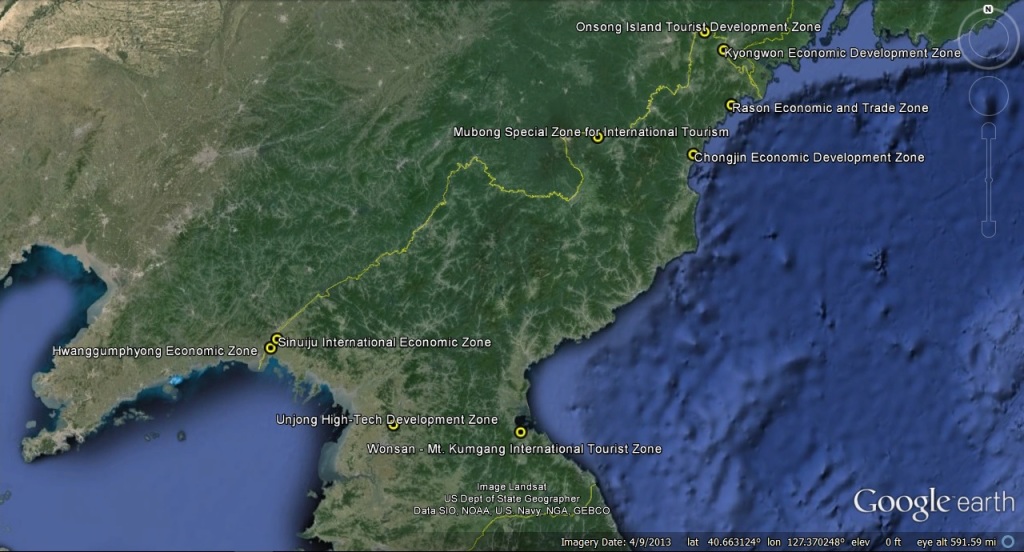North Korea’s Special Economic Zones: Plans vs. Progress
Since Kim Jong Un assumed power, he has prioritized economic development in a way his father never did. Indeed, much of his domestic brand is now linked to economic growth and quality of life issues. He has tinkered with the modus operandi of both farms and state owned enterprises, and set forth a very visible economic experiment: the creation of a dozen Special Economic Zones (SEZs) in 2013, followed by a second group in 2014, and two more zones in 2015. Four of these could be considered national priorities—Rason, Unjong, Wonsan and Sinuiju (with the extant Hwanggumpyong/Wiwha Islands)—while the rest are fairly minor in scope, size and potential. These zones, with a variety of intended functions and ostensibly foreign-friendly regulations, signal a willingness of the Kim regime to explore economic policy options. However, their slow progress and development also clearly illustrate the challenges North Korea faces to get these projects off the ground given the current business and investment environment.
Despite making SEZ development a policy priority, difficulties in the political arena and a general lack of clear economic goals have meant that Unjong is still in the planning stages, Wonsan awaits international investors and Rason has seen little activity since 2013. Sinuiju/Hwanggumpyong has seen some development, though the unfinished Yalu Bridge is also a reminder of unfulfilled potential. This report takes a look at where these four major zones and a few of the smaller, newer zones stand to date.

Sections
Conclusion
Overall, although the Kim regime may be promoting special economic zones as a key piece of its economic development strategy, there is still a long way to go to make these zones successful. Certainly, the North’s strained political relations bring about serious financial and reputational challenges to attracting foreign investment; however, it is not the only impediment to success. Inconsistent and unreliable communication about plans for the zones and a lack of strategic planning for attracting either domestic or international investment reflect limitations of the North’s domestic economic policymaking capacity.
Despite these structural challenges, localized efforts are underway to try to make individual zones work. For instance, teams from Wonsan and Unjong have begun experimenting with outreach and marketing. They are also trying to create more comprehensive development plans and organizations. Around Sinuiju, there are at least two significant construction projects well underway, reflecting a desire for cross-border cooperation in that region. The unfinished new Yalu Bridge, however, stands as a reminder that the success of most of these zones depends heavily on the DPRK’s relations with its neighbors. In particular, Wonsan and Rason eagerly await better days. Until they arrive, Rason will continue to putter along; domestic capital and visitors may have only a small impact on the Wonsan area; and smaller projects, like the newly announced Kyongwon Economic Zone, will likely remain largely undeveloped for the foreseeable future.
